


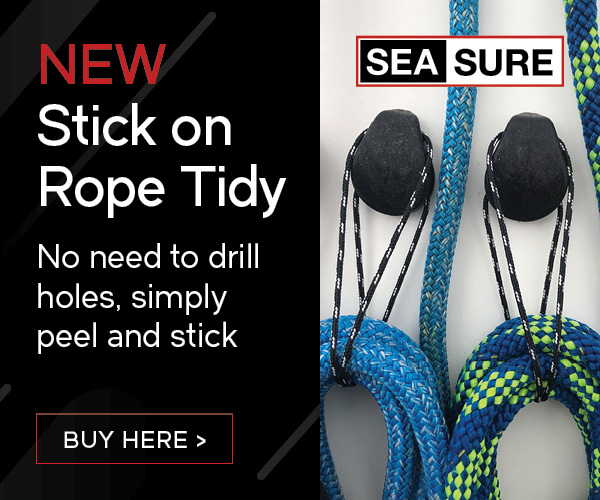



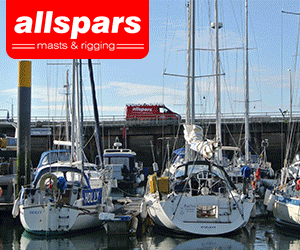

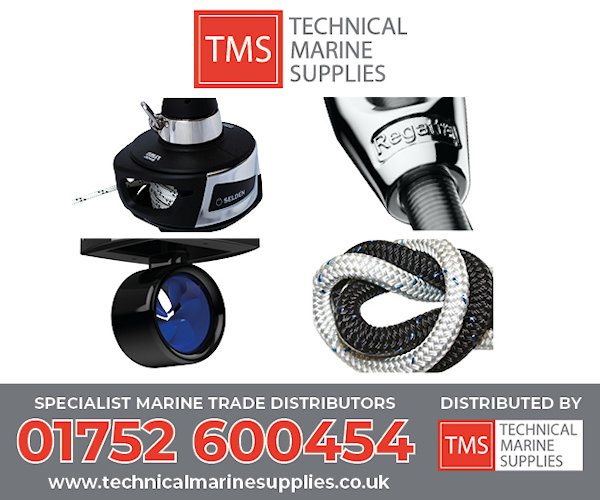
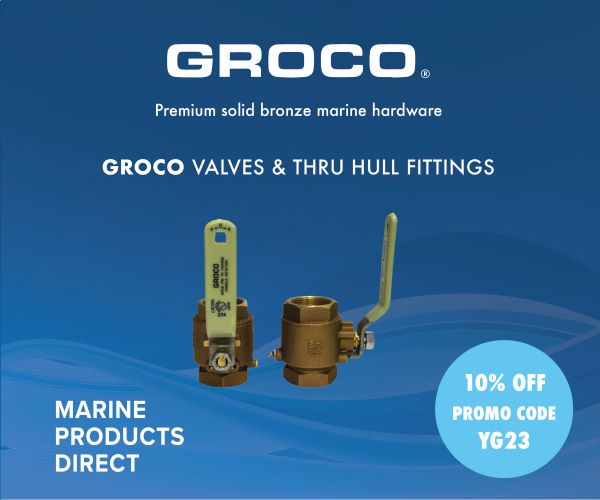


Boats for sale
| Laser 28 - Excellent example of this great design Hamble le rice |
 |
| Laser 161752 Tynemouth |
 |
| Laser 140101 Tynemouth |
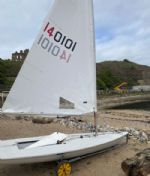 |
List classes of boat for sale |
Nice new Laser for Christmas |
Post Reply 
|
Page <1 181920 |
| Author | ||||
JimC 
Really should get out more 

Joined: 17 May 04 Location: United Kingdom Online Status: Offline Posts: 6662 |
 Post Options Post Options
 Quote Quote  Reply Reply
 Topic: Nice new Laser for Christmas Topic: Nice new Laser for ChristmasPosted: 07 Dec 14 at 9:18pm |
|||
Mmm, but no. Remember its not time that counts but places in fleet racing. If Sailors A, B, C, D, E finish 1,2,3,4,5 in light air and 5,4,3,2,1 in heavy air they get the same points whether they are 2 secs apart or 20 secs. lets say that we have 3 sailors, L, M, H. in light air they finish L, M, H. in heavy air they finish H, M, L. In moderate conditions M wins and L and H are fairly even. Series of 4 races, one light, one strong, two moderate. L scores 1, 3, 2, 3 H scores 3, 1, 3, 2 M scores 2, 2, 1, 1 |
||||
 |
||||
sargesail 
Really should get out more 
Joined: 14 Jan 06 Location: United Kingdom Online Status: Offline Posts: 1459 |
 Post Options Post Options
 Quote Quote  Reply Reply
 Posted: 07 Dec 14 at 9:18pm Posted: 07 Dec 14 at 9:18pm |
|||
Mean or median?
|
||||
 |
||||
bustinben 
Far too distracted from work 
Joined: 15 Oct 06 Online Status: Offline Posts: 288 |
 Post Options Post Options
 Quote Quote  Reply Reply
 Posted: 07 Dec 14 at 9:30pm Posted: 07 Dec 14 at 9:30pm |
|||
Mathematically you are quite right, but that's only if the light airs actually has the effect you're proposing rather than just leveling the playing field. I think reality is that sailor 1 cannot be beaten by sailor 5 in windy conditions, but sailor 5 can be beaten by sailor 1 in light conditions rather than there being a clear reversal of potential positions. This is just my perspective on this class of course, other classes may behave differently.
|
||||
 |
||||
bustinben 
Far too distracted from work 
Joined: 15 Oct 06 Online Status: Offline Posts: 288 |
 Post Options Post Options
 Quote Quote  Reply Reply
 Posted: 07 Dec 14 at 9:53pm Posted: 07 Dec 14 at 9:53pm |
|||
No offense taken  I think the lower tiller makes no difference to leech tension, rather than leech tension making no difference. You can tighten the traveller effectively as much regardless of the tiller, it's just that a non low/stiff tiller then starts to have annoying issues. Once you get traveller tension up to a given level, and wind speed is above a certain number of knots, then the main blocks are always right out on the corner being pushed down to the eyelet. If you pull on more traveller tension, it's not going to make anything better, ergo, the advantages of the flashy tiller are more ergonomic than anything else. I think the lower tiller makes no difference to leech tension, rather than leech tension making no difference. You can tighten the traveller effectively as much regardless of the tiller, it's just that a non low/stiff tiller then starts to have annoying issues. Once you get traveller tension up to a given level, and wind speed is above a certain number of knots, then the main blocks are always right out on the corner being pushed down to the eyelet. If you pull on more traveller tension, it's not going to make anything better, ergo, the advantages of the flashy tiller are more ergonomic than anything else.As for the overall effect of leech tension, it's very hard to know, as you're always prejudiced by what you think is true. If you think something is slow, it will make you slow. I don't know whether half an inch in the middle of the range makes a difference. I do think 2 inches back does, and here's my reasoning: when you're getting powered up you want to start flattening the sail to reduce power and drag. If you have a mast that is further forwards, when you go block to block you have bent the mast more (hence the greater leech tension). This flattens the sail starting at the top because the top section is more bendy than the bottom section. If you don't have this forward mast, you have to start pulling on the other sail controls sooner to depower and flatten. Kicker will bend the lower mast more than the upper (relative to the mainsheet pulling down on the leech), which is the wrong way round from what you want, and pulling on downhaul causes the leech to open and you lose height. That's my hypothesis. I'm not sure how to prove it though
 |
||||
 |
||||
Guests 
Guest Group 
|
 Post Options Post Options
 Quote Quote  Reply Reply
 Posted: 07 Dec 14 at 10:41pm Posted: 07 Dec 14 at 10:41pm |
|||
|
So is it true to say you want the most upright (or even fwd leaning when not tensioned) mast possible on a Laser (within expected tolerance)?
Edit: and is it possible to 'improve' a boat by sticking a wedge in the mast well, assuming no one checks? Edited by Peaky - 07 Dec 14 at 10:43pm |
||||
 |
||||
jeffers 
Really should get out more 

Joined: 29 Mar 04 Location: United Kingdom Online Status: Offline Posts: 3048 |
 Post Options Post Options
 Quote Quote  Reply Reply
 Posted: 08 Dec 14 at 1:37pm Posted: 08 Dec 14 at 1:37pm |
|||
If someone finds that then you will almost certainly get binned and probably protested under rule 2 or rule 69 (even at club level IMO, that is blatant cheating).
|
||||
|
Paul
---------------------- D-Zero GBR 74 |
||||
 |
||||
jeffers 
Really should get out more 

Joined: 29 Mar 04 Location: United Kingdom Online Status: Offline Posts: 3048 |
 Post Options Post Options
 Quote Quote  Reply Reply
 Posted: 08 Dec 14 at 1:43pm Posted: 08 Dec 14 at 1:43pm |
|||
Correct. But the mast cup does through bolt from the underside of the hull through both mouldings so if the alignment is out it may affect rake a little but probably only by a minimal amount depending on the amount of play in the hole that the bolt goes through.
|
||||
|
Paul
---------------------- D-Zero GBR 74 |
||||
 |
||||
Post Reply 
|
Page <1 181920 |
| Forum Jump | Forum Permissions  You cannot post new topics in this forum You cannot reply to topics in this forum You cannot delete your posts in this forum You cannot edit your posts in this forum You cannot create polls in this forum You cannot vote in polls in this forum |
Bulletin Board Software by Web Wiz Forums® version 9.665y
Copyright ©2001-2010 Web Wiz
Change your personal settings, or read our privacy policy
Copyright ©2001-2010 Web Wiz
Change your personal settings, or read our privacy policy











 Printable Version
Printable Version Delicious
Delicious Digg
Digg Facebook
Facebook Furl
Furl Google
Google MySpace
MySpace Newsvine
Newsvine reddit
reddit StumbleUpon
StumbleUpon Twitter
Twitter Windows Live
Windows Live Yahoo Bookmarks
Yahoo Bookmarks Topic Options
Topic Options
